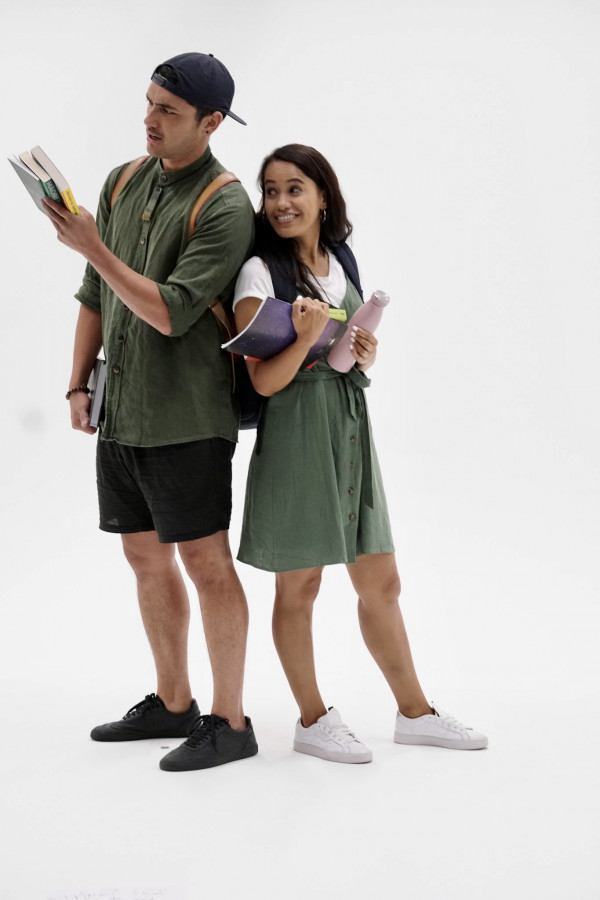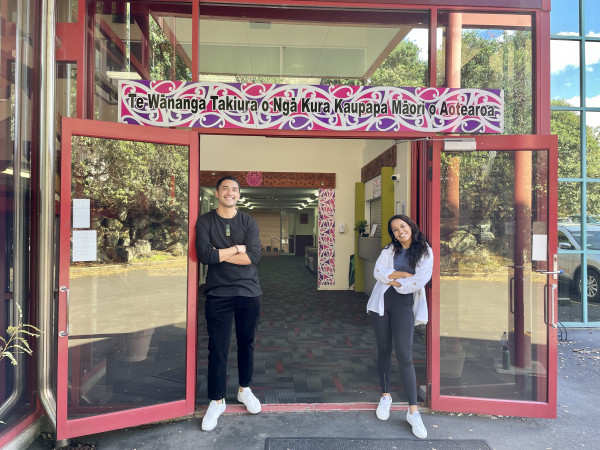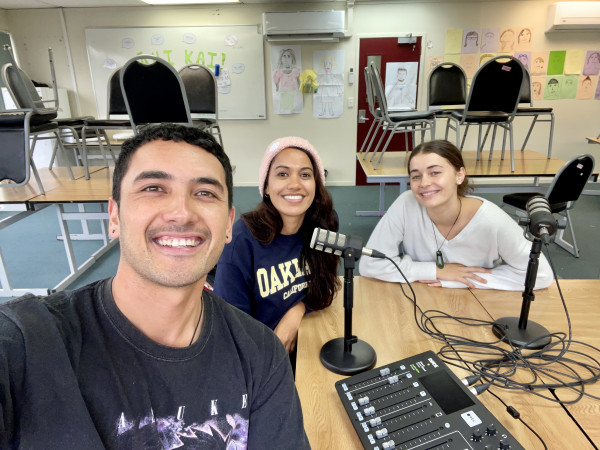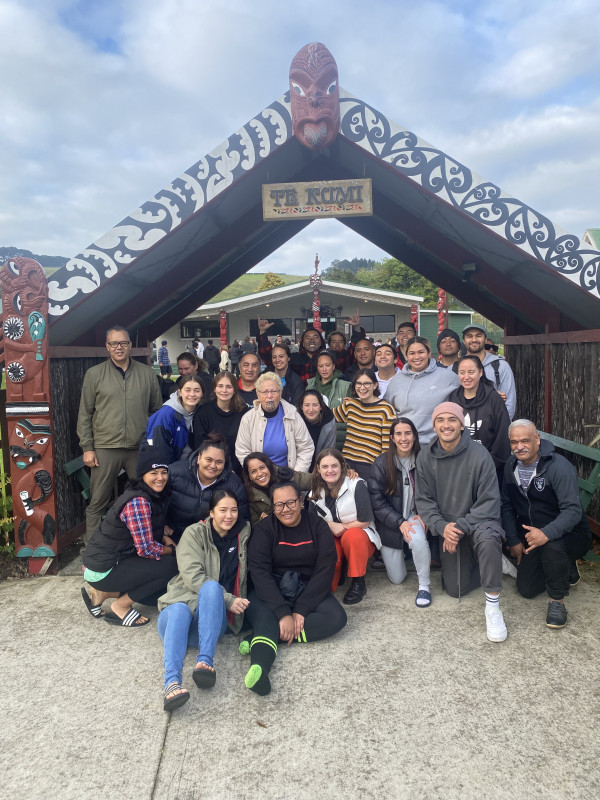By Shilo Kino
Shilo Kino is a journalist and author. Her first novel, The Porangi Boy, was published in 2020. This year she’s gone back to kura, enrolling in a fulltime te reo Māori immersion course at Te Wānanga Takiura in Tāmaki Makaurau. Here, she writes about the grief, tears, shame and confidence that comes with learning your reo.
I’ve spent the last year reclaiming te reo Māori full time and one thing I’ve learnt is this: te reo is like a form of rongoā.
Once you start the journey, you access a power that can heal deep mamae, stitching wounds and sewing pieces of your tongue back together.
But just like some forms of medicine, often it has to get worse before it gets better.
I’ve experienced the healing properties of the reo while studying full immersion at Te Wānanga Takiura. It’s a power that is difficult to put into words - the unravelling of trauma, glimpses into an unknown world and then desperately trying to hold on to that world.
And the taonga of truly understanding my tīpuna - not just the language they spoke, but how they orchestrated their lives, how they think, how they feel, and the intergenerational gifts, not just the trauma, they passed down.
Mum used to tell me she didn’t know where I got my love of writing from. But I know where it comes from. My tīpuna were storytellers. They were hōhōnu people. They observed the taiao, papatuanuku, manu, trees and could tell a whole story in just a few words.
We have hundreds of whakataukī that point to the way our tupuna think. There's whakataukī about manaaki, aroha, humility, whānau, leadership, working hard. The old stereotypes of Māori can be put to rest if you just look at our whakataukī. I drink from the fountain of knowledge of my tīpuna every day and that’s healing in itself.

Shilo Kino and her classmate, radio host Astley Nathan, host a podcast about their te reo immersion journey, Back to Kura.
If I was to ask you how your whare tāpu is, what would you say? Your taha tinana (physical well-being), taha hinengaro (mental well-being), taha whanau and taha wairua (spiritual well-being).
My whare tāpu hasn’t been a comfortable place to live in this year. There’s endless hammering, walls getting knocked down. Sometimes the tinana will feel kaha but the wairua and hinengaro walls are breaking down.
This year Te Ao Māori has come into each corner of my whare, inspected it, knocked it down, and re-built each wall into a new, refined version of myself. Maybe that’s what Papa Tawhiri meant at the beginning of the year when he said we were at kura to get a Māori heart.

Pāmamae - Grief
I don’t think anyone can prepare you for the grief. There is a mourning of loss when it comes to learning the reo. It’s unspecific - you can’t quite pinpoint where exactly the pain is coming from.
Is it the mamae of my tūpuna who had our reo beaten out of them? Is it the trying - and often failing - to learn a language that should have been my birthright, that should have been the first words that came out of my mouth?
Or is it frustration in not knowing how to handle the grief - the years I’ve lost, how different my life could have been if I had my reo.
Grief becomes anger which becomes sadness, like an endless cycle. But knowing that grief is a shared emotion makes it somewhat better. Kura is my āhuru mōwai, a safe haven. We are all grieving the loss of reo and manifesting the pain in different ways.
What is grief, if not love persevering? That’s a well known quote. But what is grief, if not love for the reo and my culture and my tīpuna persevering? One cannot exist without the other on the reclaiming journey.

Roimata - Tears
I’ve always known I was a tangiweto but I didn’t know it was possible to cry the amount of times I have this year.
Sometimes the tears come out of frustration - why can’t I understand what’s going on? Why am I not fluent yet? Why is his reo better than mine?
I cry when I see my classmates stand up each whakapuaki and speak for 25 minutes about their nana or their maunga or their kuri. I cried in class reciting a poem about my nana. I cried once when I forgot my lunch.
Sometimes the tears come unexpectedly like when I’m singing a waiata at the morning hui, the same waiata we sing most mornings, but suddenly “e kore au e ngaro” hits differently one particular day and you can't stop crying because you realize you aren't lost and you never were.
Healing can come in the form of my papa, who is 61 years old and who still struggles to wrap his tongue around the reo. I wrote him a song in te reo for our fourth whakapuaki.
He tangata ringa raupa
Ehara koe i te tangata, he momo koe
He taonga tuku iho
You’re a hard working man
You are no ordinary person
You are a gift handed down by my ancestors
Somewhere along the way dad began to believe the bad things people said about us. That’s why when I finished singing my waiata to him, even though he couldn’t really understand what I was singing, there were no words. Just tears.

Whakamā - Shame
The intense shame of not knowing the reo is often the barrier that stands in the way for so many of us. This very emotion was the catalyst for me in undertaking full immersion this year.
A year ago I was reporting for a Māori current affairs show with a deep love for te ao Māori but I could probably say only six words in te reo. I was whakamā to the point of tears. Crying in my car because someone said I shouldn't tell our stories since I don’t have the reo, or being asked to translate and not knowing how to.
I knew I had to either rumaki - drown - myself in my language or spend the rest of my life chasing crumbs.
Sometimes people will tell me to just “kōrero Māori” and it often feels like someone is telling me to drive a car, and my foot is on the pedal, the keys are in the ignition, and all my mental energy is trying, but I can’t drive the car because there are roadblocks in the way.
But there is something deeply empowering about removing the barriers and confronting your own whakamā. Six months ago I stood up for the first time and said my pepeha out loud and it meant something to me because I used to have to read it from my phone, and usually with my voice shaking.
I could never remember the names but this year I’ve physically touched my maunga and my river and been back to my marae. It gets easier.
Ngākau titikaha - Confident
Can something so simple like te reo Māori really be the rongoā for healing, for connection? Can te reo Māori really change lives?
It is impossible to not have a spiritual experience when learning the reo. Part of the healing process has been karakia and reciting my pepeha every day. Karakia when I wake up in the morning brings me into te ao Māori - we are in a world of Pākeha but my heart doesn't have to be.
I’ve spent this year on a family search, putting together my family tree, bugging all my aunties for information about my whakapapa. It’s healing knowing I’m restoring what was lost and bringing not only the reo but all the knowledge back into my whānau. And there is real power when I speak the names of my tīpuna and when I kōrero with them.
Aotearoa is still not a safe enough space to speak te reo Māori. Racism still exists and there are still blurred lines and spaces to navigate and people are still tokenizing and profiting off the language and culture.
We get knocked down and burnt and maybe the shame will hang around for a while but the insignificant melts away through the brave struggle of reclaiming the reo. And what is most important remains.
Even in all of this mamae and the grief and the shame, I can now stand proudly - ngākau titikaha - and speak the language of my tīpuna.
Kaua e mate wheke me mate ururoa. I will keep fighting for my reo.
To see more from Shilo, you can follow her on Instagram, listen to Back to Kura, her podcast with Astley Nathan as they navigate a year in full immersion te reo classes at Te Wānanga Takiura, or read her book The Pōrangi Boy.